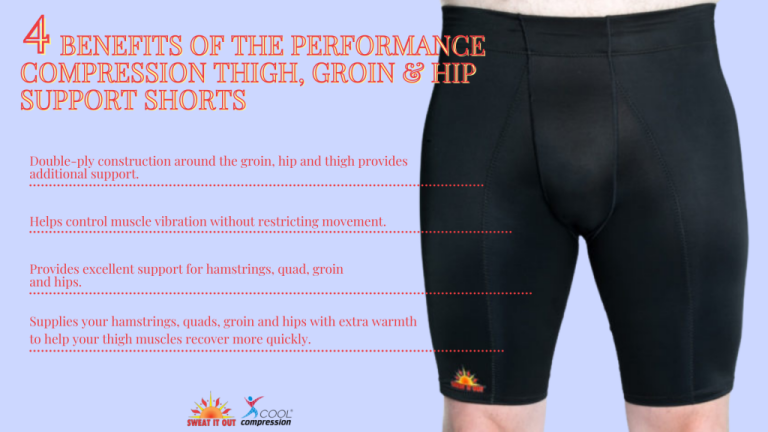iliopsoas muscle pain treatment: causes, symptoms, and exercises
Do you ever experience hip pain that hinders your daily activities? If so, you might be suffering from iliopsoas muscle pain, a condition that affects the hip joint and limits your mobility.
Whether it’s caused by overuse, injury, or inflammation, this pain can significantly impact your quality of life. But fear not!
There are treatment options available that can help alleviate your discomfort and restore your range of motion. In this article, we will explore the various approaches to iliopsoas muscle pain treatment, including rest, physical therapy, and other interventions.
So, if you’re tired of being held back by hip pain, keep reading to discover the relief you’ve been seeking.
iliopsoas muscle pain treatment
Iliopsoas muscle pain treatment typically involves a combination of rest, ice, physical therapy, and other interventions. Iliopsoas bursitis, which is characterized by hip joint pain and limited range of motion, can be caused by overuse in athletes or regular exercisers.
Treatment options for mild cases include rest, icing, and over-the-counter anti-inflammatory medications. More severe cases may require additional therapies such as physical therapy, corticosteroid injections, anti-inflammatory medications, and walking aids.
Stretching and exercises can help prevent iliopsoas bursitis by reducing tightness in the hips. It is important to seek consultation with healthcare professionals before starting any treatment for iliopsoas muscle pain.
Key Points:
- Treatment for iliopsoas muscle pain involves rest, ice, physical therapy, and other interventions
- Iliopsoas bursitis may cause hip joint pain and limited range of motion, usually due to overuse
- Mild cases of iliopsoas bursitis can be treated with rest, icing, and over-the-counter anti-inflammatory medications
- More severe cases may require physical therapy, corticosteroid injections, anti-inflammatory medications, and walking aids
- Stretching and exercises can help prevent iliopsoas bursitis by reducing tightness in the hips
- Consultation with healthcare professionals is important before starting any treatment for iliopsoas muscle pain.
Sources
https://www.medicalnewstoday.com/articles/320589
https://www.verywellhealth.com/iliopsoas-anatomy-4706830
https://physiqz.com/physical-therapy/exercises-stretches/psoas-muscle-pain-symptoms-treatment/
https://my.clevelandclinic.org/health/diseases/15721-psoas-syndrome
Check this out:
💡 Pro Tips:
1. Apply heat therapy: Along with rest and ice, you can also try applying heat to the affected area to help reduce pain and promote healing. Use a heating pad or take a warm bath to soothe the iliopsoas muscle.
2. Consider alternative therapies: In addition to traditional treatment options, alternative therapies such as acupuncture or chiropractic care may provide relief from iliopsoas muscle pain. These therapies can help reduce inflammation and improve muscle function.
3. Practice proper posture: Poor posture can contribute to iliopsoas muscle pain. It’s important to maintain good posture throughout the day, especially when sitting for long periods. Sit with your back straight, shoulders relaxed, and feet flat on the floor to alleviate strain on the hip joint.
4. Strengthen the surrounding muscles: Strengthening the muscles around the hips can help support the iliopsoas muscle and reduce the risk of further injury. Focus on exercises that target the hip flexors, glutes, and core muscles to improve stability and prevent reoccurrence of pain.
5. Use a foam roller: Using a foam roller can help release tension and tightness in the iliopsoas muscle. Lie down on the foam roller, placing it just above the hip bone, and slowly roll back and forth, focusing on any areas of discomfort. This can help alleviate pain and improve flexibility in the hips.
Treatment Options For Iliopsoas Bursitis
Iliopsoas bursitis is a common condition characterized by pain and limited range of motion in the hip joint. Athletes and regular exercisers often experience this condition due to overuse and strain on the iliopsoas muscle.
Fortunately, there are several treatment options available to alleviate the symptoms and promote healing.
One of the initial treatment options for iliopsoas bursitis is rest. Allowing the affected muscle to rest and avoid any activities that exacerbate the pain is crucial in the early stages of treatment.
This may mean temporarily reducing physical activity or using walking aids, such as crutches or a cane, to avoid putting unnecessary stress on the hip joint.
Applying ice to the affected area can also provide relief and reduce inflammation. Using an ice pack or cold compress for 10 to 15 minutes at a time, several times a day, can help alleviate pain and swelling.
Physical therapy is another effective treatment option for iliopsoas bursitis. A physical therapist can develop a tailored exercise program to strengthen the surrounding muscles, improve range of motion, and promote proper alignment.
These exercises may include stretching, strength training, and flexibility exercises.
In some cases, additional treatments may be necessary to manage the symptoms of iliopsoas bursitis. This can include over-the-counter anti-inflammatory medications to reduce pain and inflammation.
Corticosteroid injections may also be administered to reduce swelling and provide pain relief directly to the affected area.
Symptoms Of Iliopsoas Bursitis
Recognizing the symptoms of iliopsoas bursitis is essential for early diagnosis and treatment. The following symptoms are commonly associated with this condition:
-
Pain around the hip joint: Individuals with iliopsoas bursitis often experience pain in the front of the hip, which may radiate down the leg or towards the buttocks.
-
Stiffness in the morning: Many people with iliopsoas bursitis experience stiffness in the hip joint when they first wake up in the morning or after prolonged periods of rest.
-
Aggravated pain during exercise or walking: Engaging in physical activities that involve the hip joint, such as walking or exercising, can worsen the pain and discomfort associated with iliopsoas bursitis.
-
Limited range of motion: Reduced flexibility and difficulty in performing movements that require hip joint mobility are common symptoms of iliopsoas bursitis.
If you experience any of these symptoms, it is important to consult with a healthcare professional for an accurate diagnosis and appropriate treatment plan.
Causes Of Iliopsoas Bursitis
Iliopsoas bursitis can be caused by various factors, including repetitive use, tight hips, and certain chronic conditions. Overuse or repetitive movements, such as running or cycling, can strain the iliopsoas muscle and lead to inflammation of the bursa.
Individuals with tight hips are also more prone to developing iliopsoas bursitis. When the hip muscles are tight, it can affect the alignment and functioning of the hip joint, increasing the risk of bursitis.
Chronic conditions, such as arthritis, can further contribute to the development of iliopsoas bursitis. Arthritis causes inflammation in the hip joint, which can irritate the surrounding bursa and lead to bursitis.
It is important to note that other conditions, such as hip labrum tear, femoroacetabular impingement, and hip arthritis, can also cause hip pain and limited mobility. Therefore, a thorough evaluation by a healthcare professional is essential to determine the underlying cause of the symptoms and develop an appropriate treatment plan.
Managing Mild Cases Of Iliopsoas Bursitis
In mild cases of iliopsoas bursitis, conservative treatment options can often effectively manage the symptoms and promote healing. If diagnosed with a mild case, these management strategies may be recommended:
-
Rest: Avoiding activities that worsen the pain and allowing the hip joint to rest can help reduce inflammation and promote healing.
-
Ice: Applying ice packs or cold compresses to the affected area for 10 to 15 minutes several times a day can help reduce pain and swelling.
-
Over-the-counter medications: Non-steroidal anti-inflammatory drugs (NSAIDs), such as ibuprofen, can be taken to alleviate pain and reduce inflammation.
Gentle stretches and exercises may also be beneficial in managing mild cases of iliopsoas bursitis. These exercises should be performed under the guidance of a healthcare professional or a physical therapist to prevent further injury and ensure proper form.
Additional Therapies For Severe Cases Of Iliopsoas Bursitis
In more severe cases of iliopsoas bursitis, additional therapies may be necessary to provide relief and promote healing. These therapies may include:
-
Physical therapy: A physical therapist can develop a personalized exercise program to strengthen the surrounding muscles, improve range of motion, and promote proper alignment. This may involve a combination of stretching, strength training, and flexibility exercises.
-
Corticosteroid injections: Injections of corticosteroids directly into the affected area can help alleviate pain and reduce inflammation more effectively than oral medication alone.
-
Walking aids: In cases where mobility is severely affected, the use of walking aids, such as crutches or a cane, may be recommended to reduce pressure on the hip joint and promote healing.
It is important to note that the specific treatment plan for severe cases of iliopsoas bursitis will depend on the individual’s condition and response to conservative therapies. Consultation with healthcare professionals, such as orthopedic specialists or physical therapists, is essential for proper diagnosis and treatment.
Prevention And Long-Term Effects Of Iliopsoas Bursitis
Preventing iliopsoas bursitis involves maintaining hip joint mobility and reducing strain on the iliopsoas muscle. Incorporating stretching and strengthening exercises into your fitness routine can help prevent the development of tightness in the hip muscles that can contribute to bursitis.
Additionally, avoiding repetitive activities that put excessive stress on the hip joint and practicing proper form during exercises can help reduce the risk of developing iliopsoas bursitis.
If left untreated, iliopsoas bursitis can worsen over time and lead to chronic pain and limited mobility. It is important to seek early medical intervention to prevent long-term effects and promote proper healing.
In conclusion, iliopsoas muscle pain, specifically iliopsoas bursitis, can cause significant discomfort and limitation in hip joint mobility. Treatment options for this condition range from conservative approaches, such as rest, ice, and physical therapy, to more invasive interventions, such as corticosteroid injections.
Recognizing the symptoms, understanding the causes, and implementing preventative measures can contribute to the effective management and prevention of iliopsoas bursitis. Remember to consult with healthcare professionals for an accurate diagnosis and personalized treatment plan.







